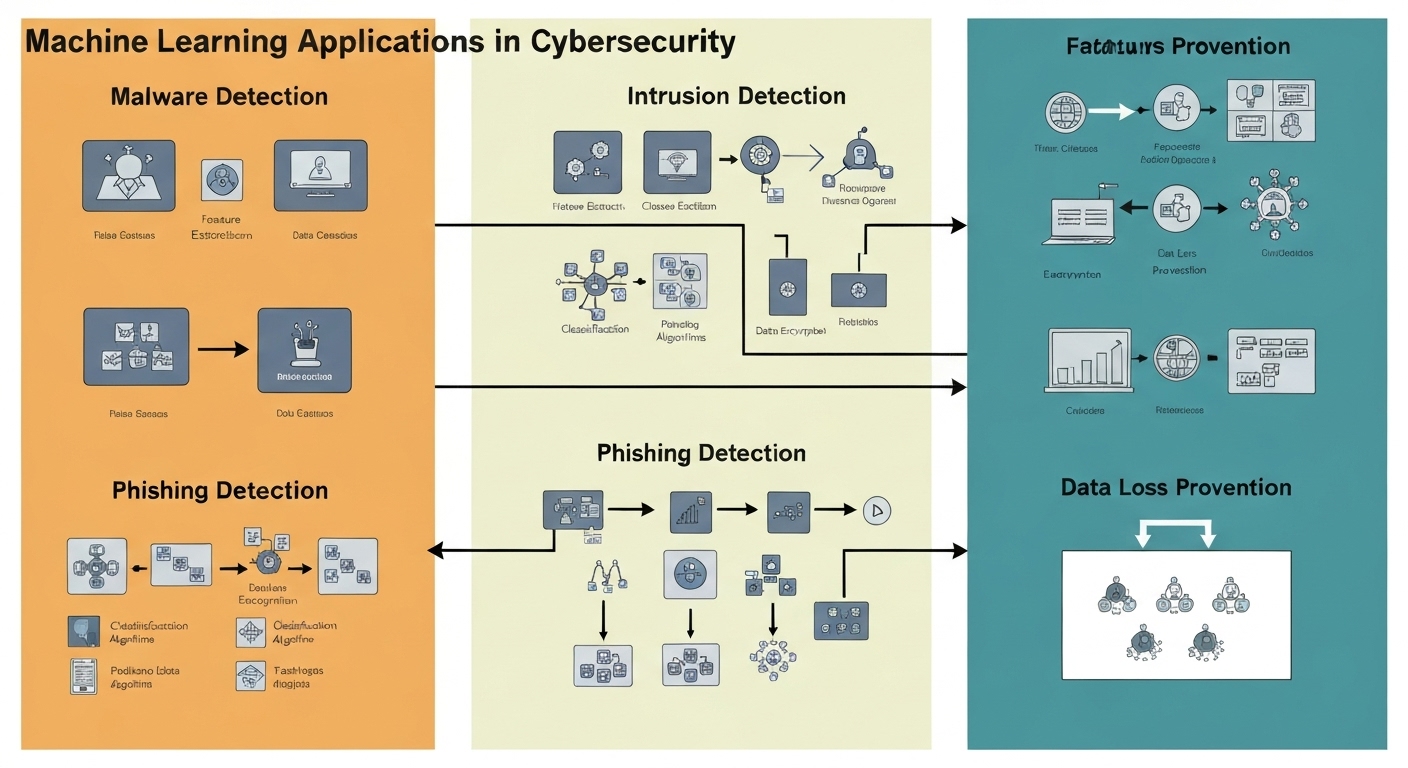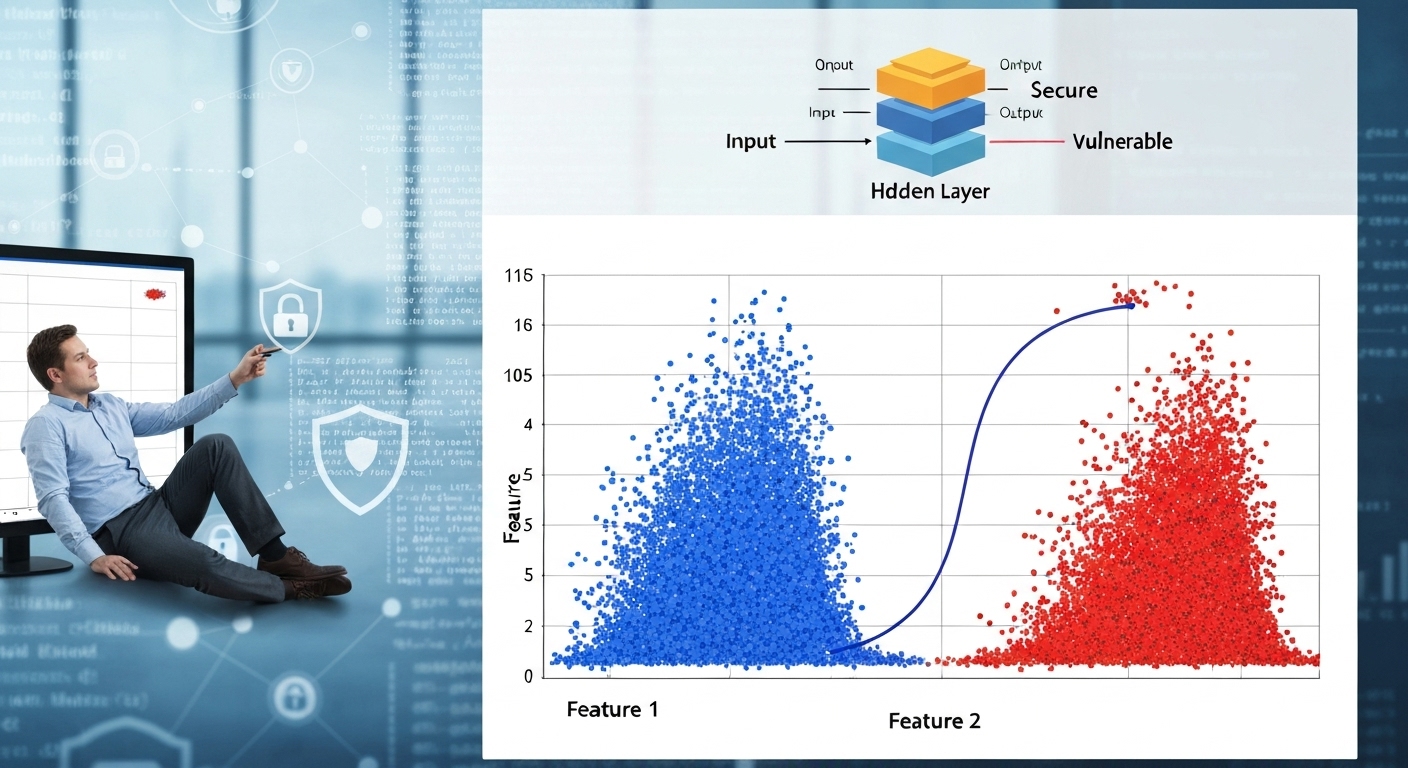Machine Learning Models for Data Security : A Comprehensive Guide
Machine learning models for data security are revolutionizing how organizations protect their sensitive information. These models can automate threat detection, improve accuracy, and adapt to evolving security landscapes.

Understanding the Role of Machine Learning in Data Security
Traditional security measures often struggle to keep pace with the sophistication and volume of modern cyberattacks. Machine learning offers a proactive and adaptive approach, enabling systems to learn from data and identify patterns indicative of malicious activity. Using machine learning in data security allows for faster response times and more effective threat mitigation.
Benefits of Using Machine Learning
- Improved Threat Detection: Machine learning algorithms can identify subtle anomalies and indicators of compromise that might be missed by traditional rule-based systems.
- Automation: Automate repetitive tasks, freeing up security personnel to focus on more complex investigations.
- Adaptability: Machine learning models can adapt to changing threat landscapes and learn from new data, ensuring that security measures remain effective over time.
- Scalability: Easily scale security solutions to handle growing data volumes and network traffic.

Types of Machine Learning Models Used for Data Security
Several types of machine learning models are commonly employed in data security, each offering unique strengths for different applications. Here are some key models:
Anomaly Detection Models
Anomaly detection models identify unusual patterns or behaviors that deviate from the norm. These models are particularly useful for detecting insider threats, network intrusions, and fraudulent activities. Anomaly detection is one of the most potent applications of machine learning models for data security.
Examples of anomaly detection algorithms:
- One-Class SVM: A support vector machine trained on normal data to identify outliers.
- Isolation Forest: An algorithm that isolates anomalies by randomly partitioning data.
- Autoencoders: Neural networks trained to reconstruct input data; anomalies result in higher reconstruction errors.
Classification Models
Classification models categorize data points into predefined classes, such as malicious or benign. These models are used for spam filtering, malware detection, and identifying phishing attempts. They use machine learning for cybersecurity to provide proactive and reliable security.
Examples of classification algorithms:
- Logistic Regression: A linear model that predicts the probability of a data point belonging to a certain class.
- Support Vector Machines (SVM): A powerful algorithm that finds the optimal hyperplane to separate different classes.
- Decision Trees: Tree-like structures that make decisions based on a series of rules.
- Random Forests: An ensemble of decision trees that improves accuracy and reduces overfitting.

Clustering Models
Clustering models group similar data points together, allowing security analysts to identify patterns and relationships that might indicate a security incident. These models can be used for network segmentation, user behavior analysis, and threat intelligence.
Examples of clustering algorithms:
- K-Means: An algorithm that partitions data into K clusters based on distance to cluster centroids.
- Hierarchical Clustering: An algorithm that builds a hierarchy of clusters based on similarity.
- DBSCAN: A density-based clustering algorithm that identifies clusters based on the density of data points.
Regression Models
Regression models predict continuous values based on input data. In data security, these models can be used for risk assessment, vulnerability scoring, and predicting the impact of security breaches.
Examples of regression algorithms:
- Linear Regression: A linear model that predicts a continuous output based on input variables.
- Polynomial Regression: A regression model that fits a polynomial equation to the data.
- Support Vector Regression (SVR): A support vector machine used for regression tasks.

Applications of Machine Learning Models for Data Security
Machine learning models for data security have a wide range of applications in cybersecurity. These models can be adapted to various security challenges, enhancing an organization’s overall security posture.
Intrusion Detection Systems (IDS)
Machine learning-powered IDS can analyze network traffic and system logs to detect malicious activities in real time. These systems can identify anomalies, predict attacks, and automate incident response.
Malware Detection
Machine learning models can analyze malware samples to identify patterns and characteristics that distinguish them from benign software. This allows for the detection of new and unknown malware variants.
Phishing Detection
Machine learning can be used to analyze emails and websites to identify phishing attempts. These models can detect suspicious content, identify fake URLs, and flag potential phishing scams.
User and Entity Behavior Analytics (UEBA)
UEBA uses machine learning to analyze user and entity behavior to detect insider threats and compromised accounts. By establishing baseline behavior patterns, these systems can identify deviations that might indicate malicious activity.
Vulnerability Management
Machine learning models can be used to prioritize vulnerabilities based on their potential impact and likelihood of exploitation. This allows security teams to focus on addressing the most critical vulnerabilities first.
Challenges and Considerations
While machine learning models for data security offer significant benefits, there are also challenges and considerations to keep in mind:
- Data Quality: Machine learning models rely on high-quality data to perform effectively. Poor data quality can lead to inaccurate predictions and false positives.
- Model Training: Training machine learning models requires significant computational resources and expertise. It’s crucial to have a strong understanding of machine learning algorithms and best practices.
- Model Explainability: Understanding why a machine learning model makes a particular prediction can be challenging. Explainable AI (XAI) techniques can help improve model transparency.
- Adversarial Attacks: Machine learning models can be vulnerable to adversarial attacks, where attackers intentionally craft inputs to deceive the model.

Best Practices for Implementing Machine Learning in Data Security
To maximize the effectiveness of machine learning models for data security, follow these best practices:
- Define Clear Objectives: Clearly define the security goals and objectives that machine learning should address.
- Gather High-Quality Data: Collect and preprocess data from relevant sources, ensuring data quality and completeness.
- Choose the Right Models: Select machine learning models that are appropriate for the specific security challenges.
- Train and Evaluate Models: Train models using a representative dataset and evaluate their performance using appropriate metrics.
- Monitor and Maintain Models: Continuously monitor model performance and retrain models as needed to adapt to evolving threats.
- Integrate with Existing Security Systems: Integrate machine learning models with existing security systems to create a comprehensive security solution.
Future Trends in Machine Learning and Data Security
The field of machine learning and data security is constantly evolving. Here are some future trends to watch:
- Artificial Intelligence (AI)-Powered Security Automation: AI and machine learning will be increasingly used to automate security tasks, such as incident response and vulnerability management.
- Federated Learning: Federated learning will enable organizations to train machine learning models on decentralized data without sharing sensitive information.
- Reinforcement Learning: Reinforcement learning will be used to develop adaptive security systems that can learn and improve over time through trial and error.
- Quantum Machine Learning: Quantum computing will enable the development of more powerful machine learning models for data security.
For more information on cybersecurity best practices, visit cisa.gov.
For advanced cloud security solutions, consider flashs.cloud.
Conclusion
Machine learning models for data security are transforming the way organizations protect their data. By leveraging the power of machine learning, security teams can improve threat detection, automate security tasks, and adapt to evolving security landscapes. As machine learning technology continues to advance, it will play an increasingly important role in safeguarding sensitive information and mitigating cyber risks.
HOTLINE
+84372 005 899


